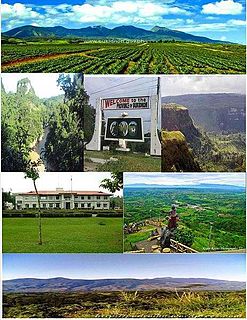
Bukidnon, officially the Province of Bukidnon, is a landlocked province in the Philippines located in the Northern Mindanao region. Its capital is the city of Malaybalay. The province borders, clockwise starting from the north, Misamis Oriental, Agusan del Sur, Davao del Norte, Cotabato, Lanao del Sur, and Lanao del Norte. According to the 2015 census, the province is inhabited by 1,415,226 residents. The province is composed of 2 component cities and 20 municipalities. It is the third largest province in the country in terms of total area of jurisdiction behind Palawan and Isabela respectively.

Malaybalay, officially the City of Malaybalay or simply referred to as Malaybalay City, is a 1st class city and capital of the province of Bukidnon, Philippines. According to the 2015 census, it has a population of 174,625 people.

Lantapan, officially the Municipality of Lantapan, is a 1st class municipality in the province of Bukidnon, Philippines. According to the 2015 census, it has a population of 61,776 people.

San Francisco, officially the Municipality of San Francisco, is a 1st class municipality in the province of Agusan del Sur, Philippines. According to the 2015 census, it has a population of 74,542 people.
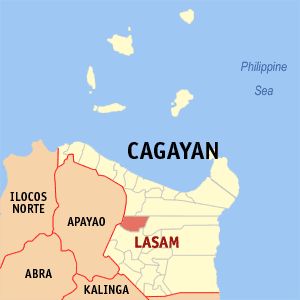
Lasam, officially the Municipality of Lasam, is a 3rd class municipality in the province of Cagayan, Philippines. According to the 2015 census, it has a population of 39,135 people.
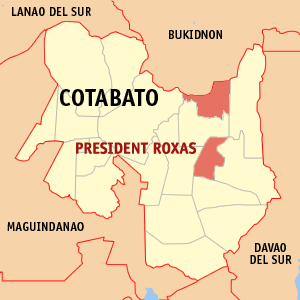
President Roxas, officially the Municipality of President Roxas, is a 1st class municipality in the province of Cotabato, Philippines. According to the 2015 census, it has a population of 47,575 people.
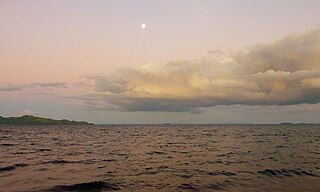
Placer, officially the Municipality of Placer, is a 4th class municipality in the province of Surigao del Norte, Philippines. According to the 2015 census, it has a population of 27,094 people.

Valencia, officially the City of Valencia or simply referred to as Valencia City, is a 2nd class city in the province of Bukidnon, Philippines. According to the 2015 census, it has a population of 192,993 people.
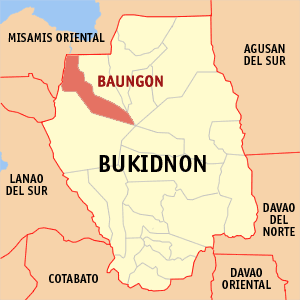
Baungon, officially the Municipality of Baungon, is a 2nd class municipality in the province of Bukidnon, Philippines. According to the 2015 census, it has a population of 34,336 people.

Dangcagan, officially the Municipality of Dangcagan, is a 3rd class municipality in the province of Bukidnon, Philippines. According to the 2015 census, it has a population of 23,723 people.

Impasugong, officially the Municipality of Impasugong, is a 1st class municipality in the province of Bukidnon, Philippines. According to the 2015 census, it has a population of 47,859 people.

Kadingilan, officially the Municipality of Kadingilan, is a 3rd class municipality in the province of Bukidnon, Philippines. According to the 2015 census, it has a population of 33,778 people.

Kibawe, officially the Municipality of Kibawe, is a 2nd class municipality in the province of Bukidnon, Philippines. According to the 2015 census, it has a population of 39,612 people.

Kitaotao, officially the Municipality of Kitaotao, is a 1st class municipality in the province of Bukidnon, Philippines. According to the 2015 census, it has a population of 50,260 people.

Manolo Fortich, officially the Municipality of Manolo Fortich, is a 1st class municipality in the province of Bukidnon, Philippines. According to the 2015 census, it has a population of 100,210 people.

Maramag, officially the Municipality of Maramag, is a 1st class municipality in the province of Bukidnon, Philippines. According to the 2015 census, it has a population of 102,089 people.

Pangantucan, officially the Municipality of Pangantucan, is a 1st class municipality in the province of Bukidnon, Philippines. According to the 2015 census, it has a population of 53,126 people.

Quezon, officially the Municipality of Quezon, is a 1st class municipality in the province of Bukidnon, Philippines. According to the 2015 census, it has a population of 104,116 people.

San Fernando, officially the Municipality of San Fernando, is a 1st class municipality in the province of Bukidnon, Philippines. According to the 2015 census, it has a population of 56,138 people.

Manukan, officially the Municipality of Manukan,, is a 3rd class municipality in the province of Zamboanga del Norte, Philippines. According to the 2015 census, it has a population of 36,526 people.























